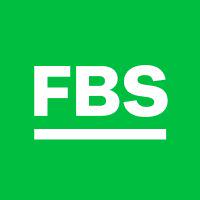How much money do I need for Forex trading?
Information is not investment advice
If you want to become a Forex trader and are wondering how much money you should spend on trading, you have come to the right place. In this article, we explain what is the minimal amount of money you will require to trade currencies.
Demo Trading Account
To begin with, remember that there are demo accounts that allow you to practice trading without investing a single dollar. The size of a demo account with FBS can be up to $1 million. The demo account will allow you to practice opening orders and setting position sizes.
Real account
If you are ready to trade using the real account and make real money, you should know that the amount of money you need to start trading depends on the account type you choose. For example, to trade on the Cent account you will need to deposit at least $5. You will be able to open orders the volume of which starts from 0.01 lots and use decent leverage. If you plan to open many trades, consider a standard account with a 0.5-pip floating spread. This type of account requires a minimal investment of $100. Notice that you can open one account of each type. In order to be able to open up to 10 accounts of any type, you need to verify your personal area, change confirmation method from email to SMS, and make sure that the total deposit to all accounts in your personal area is $100 or more.
Your deposit determines your trade size
The minimum trade size with FBS is 0.01 lots. A lot is a standard contract size in the currency market. It’s equal to 100,000 units of a base currency, so 0.01 lots account for 1,000 units of the base currency.
If you buy 0.01 lots of EUR/USD and your leverage is 1:500, you will need €2 as a margin for the trade. If you deposited €10 on the account, you deposit will cover this margin and you will be able to open another four trades of this size. Each point of price movement will either bring you or cost you €0.01.
Let’s consider some good options for a beginner trader. The examples we bring here are safe and sound from the point of risk management.
Deposit = $100
The amount of risk for a single trade should be below 5%, no matter how big your deposit is. Let’s go with a 3% risk ($3). If you trade 0.01 lots, you can have a Stop Loss of up to 30 pips — this is more than enough for an intraday position. The recommended risk/reward ratio is ⅓, so the potential profit for this trade will be 90 pips ($9).
Deposit = €500
What if your deposit is €500? With 3% risk (€15) and 1:500 leverage, your trade size can be 0.07 lots. In this case, each point of profit/loss will account for €0.07. There will be 214 points for a Stop Loss. If you need a wider Stop, you can trade 0.01 lot: this will make each point cost €0.01. Stop Loss will be 1500 points. The profit in this case (if your Take Profit is 3 times bigger) will be €75.
Deposit = €1000
If your deposit is €1000, you, of course, will be capable of opening even bigger trades. The risk of 3% for a trade (€33,33) and 1:30 leverage will allow you to trade 0.01 lots. In this case, 300 points of profit will account for a gain of €3.
Another important thing: remember about Margin Calls and Stop Outs. Margin Call is an allowed margin level of 80% and lower. At this point, the company is entitled but not liable to close all open positions of a client due to the lack of free margin. Stop Out is a minimum allowed level of margin (50% and lower) at which the trading program will start to close client’s open positions one by one in order to prevent further losses that lead to negative balance (below €0).
If you abide by the rules of risk management and don’t put your entire deposit in trading at once, you’ll be safe from Margin Calls and Stop Outs.
Conclusion
As you see, you need at least €5 to start trading. The rest is up to you! Make an estimate of your knowledge and experience and also think about your goals. How much money would you like to earn? How often will you trade? The bigger the deposit, the bigger position sizes, the more you will earn from one trade. All of that should be weighed against the background of risks.
Please make sure that you spend only your spare money on trading and not the money that covers your basic life needs. Trading offers great opportunities to profit, but it’s risky and losses are possible.












